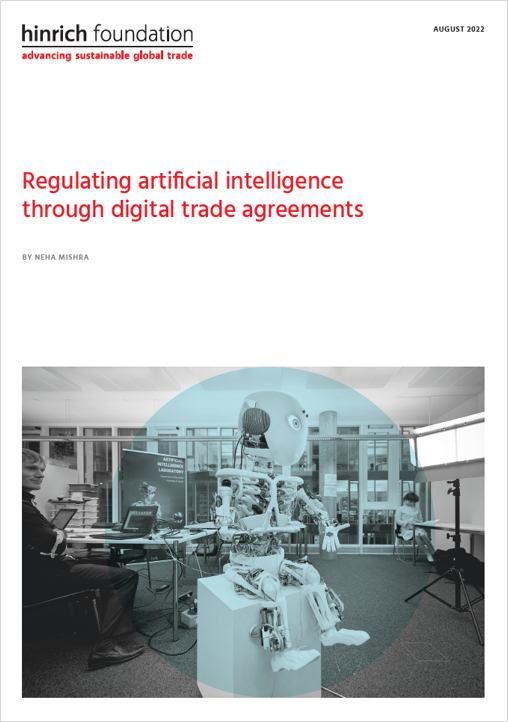Trade and technology
Regulating artificial intelligence through digital trade agreements
Published 30 August 2022
Governments across the world are struggling to find the right regulatory tools to balance artificial intelligence (AI) innovation with other public interests. Trade law is an important part of this jigsaw puzzle. Instead of curtailing AI trade through unilateral measures, countries can benefit by developing pragmatic, innovative, and flexible cooperation on AI regulation.
The transformative feature of artificial intelligence (AI) has prompted policymakers to become increasingly inclined to regulate the technology with a heavy hand. However, AI regulation should not only be perceived from a domestic law lens. While several governments are indeed busy developing national policy frameworks and domestic laws on AI, the international community is simultaneously seeking solutions to address the transnational policy risks and opportunities.
This paper by Neha Mishra of the Geneva Graduate Institute examines the interface of trade agreements and AI regulation as the two grow more intertwined. Although innovations in AI are driving the next generation of digital trade, accounts of the positive impact on economic growth must be viewed with caution. In some cases, AI has failed to deliver the best results for companies and, even more troubling, at a societal level.
The paper also outlines the key policy challenges of AI, both from the domestic and global context. It touches upon various trade rules to explain how they facilitate and restrict AI-driven trade as well as respond to AI specific policy challenges. It argues that a conflict between trade law and domestic and transnational AI regulation is not inevitable, and that such synergy would require trade organizations to be more flexible, innovative, and pragmatic.
© The Hinrich Foundation. See our website Terms and conditions for our copyright and reprint policy. All statements of fact and the views, conclusions and recommendations expressed in this publication are the sole responsibility of the author(s).






